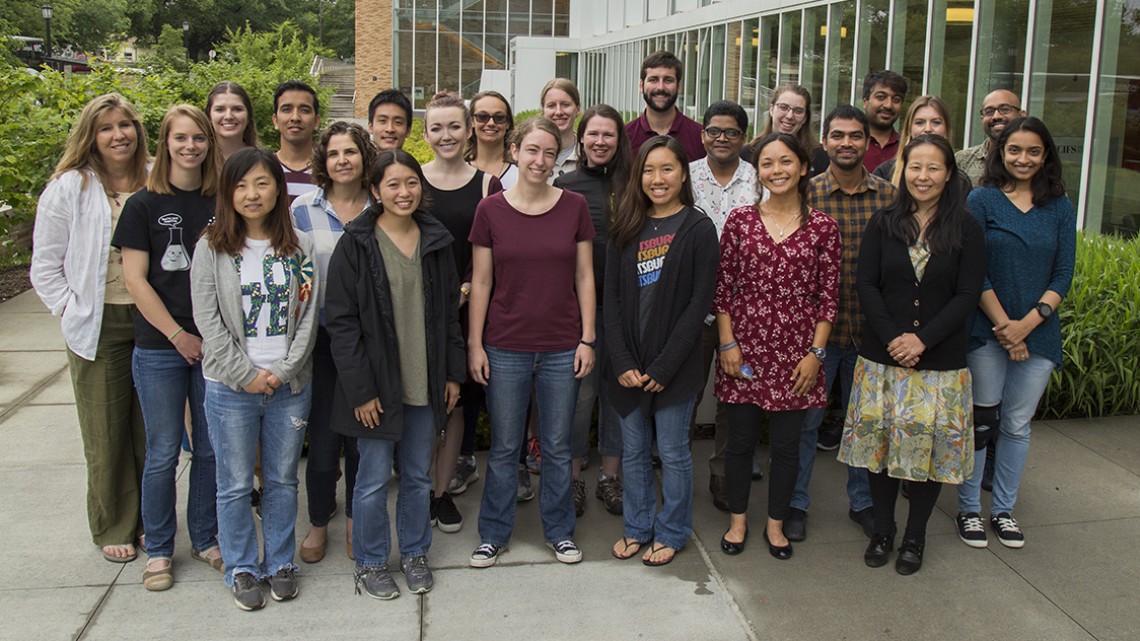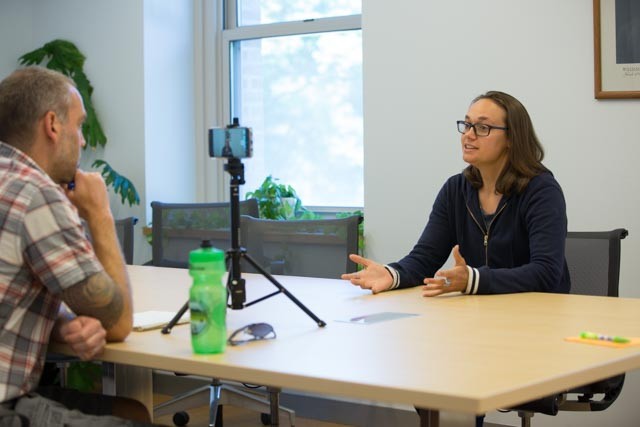
30 early-career plant scientists from 15 institutions across the U.S. honed their science communication skills in a course conducted by the Cornell Alliance for Science.
Workshop trains plant scientists to communicate science
By Linda McCandless
“Imagine yourself having difficulty breathing and someone gives you a respirator. Speaking Science gave me that breathing space when I have to communicate with others,” said Smit Dhakal, a doctoral student from Texas A&M University, about learning to breathe life into the work he is passionate about for diverse audiences in a Speaking Science course at Cornell, June 25-30.
Dhakal, one of 30 early-career plant scientists from 15 institutions across the U.S., honed his science communication skills in a course conducted by the Cornell Alliance for Science, a global communications initiative based in International Programs in the College of Agriculture and Life Sciences (CALS).
“More than ever, young scientists are asking for training on how to talk about science to nontechnical audiences. The Alliance is well positioned and eager to help address that demand,” said Sarah Evanega, director of the Alliance for Science. “Young scientists understand that if they don’t get out there and defend science, no one will. It’s great to see their appetite to engage with communities about science.”
The course was supported by Cornell’s School of Integrative Plant Science section of Plant Breeding and Genetics, as well as the Plant Breeding Coordinating Committee of the National Association of Plant Breeders and the WheatCAP project.
“Science is conducted for the public, with public money, and is not done until the public hears about it,” explained Michael Kantar, an assistant professor of plant breeding at the University of Hawaii at Manoa, who approached the Alliance for Science about leading the course last August and then attended as a mentor.
How exactly to do that communication is another question – one that many participants were unsure of when they joined the Speaking Science course.
In a mix of practical exercises, participants explored techniques for getting their science message across to a broad range of specific audiences, from senate staffers to journalists, growers and farmers, to an old friend at a cocktail party. They had the opportunity to explore different media through which they can communicate, with opportunities to practice interview techniques for print, radio and video. The importance of using new digital channels and social media was explored as was the art of writing an op-ed.
“This course was a fantastic hands-on experience in which we used our entire identity and personality to communicate and reach our audiences and tell our story,” said Saarah Kuzay, a doctoral student at the University of California, Davis. “Science communication is so much more than conveying facts – it’s about gaining a person’s trust without having met him/her before.”
The program drew on experts across the CALS, including Samara Sit, CALS associate dean for marketing and communications, who encouraged the students and postdoctoral researchers participating in the course to get out there and communicate, citing collaboration, career advancement, increased funding opportunities and scientific awards as good drivers in addition to contributing to public understanding of science.
“Scientists today have a wide range of channels in which to engage with peers as well as those outside the academy,” said Sit. “Having the public understand the impact of agricultural research on a basic level has a wide range of benefits, from short-term curiosity to long-term funding and other institutional support.”
And when it was all said and done? “This week I got to see graduate students present science in ways that I could have understood in elementary school,” said Kantar.
Linda McCandless is communications director for IP-CALS.
Media Contact
Get Cornell news delivered right to your inbox.
Subscribe

